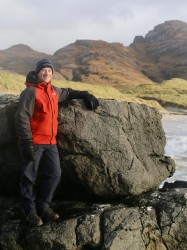BibTex format
@article{Fitzpayne:2018:10.3390/min8120548,
author = {Fitzpayne, A and Prytulak, J and Wilkinson, J and Cooke, D and Baker, M and Wilkinson, C},
doi = {10.3390/min8120548},
journal = {Minerals},
title = {Assessing thallium elemental systematics and isotope ratio variations in porphyry ore systems: A case study of the Bingham Canyon district},
url = {http://dx.doi.org/10.3390/min8120548},
volume = {8},
year = {2018}
}

